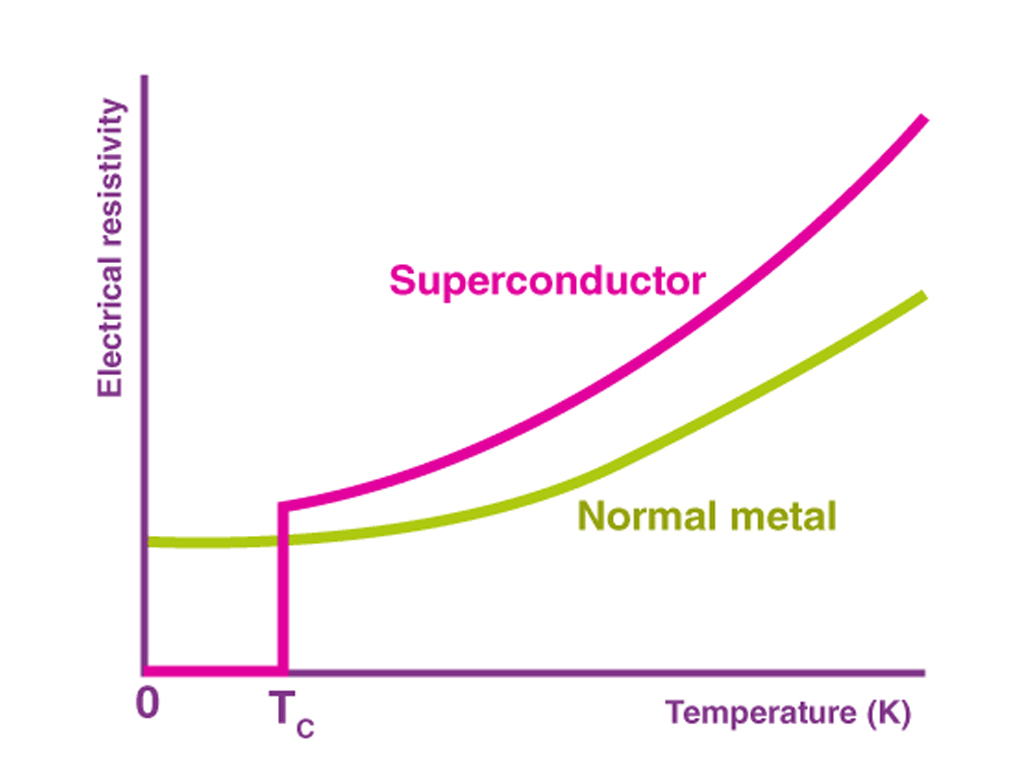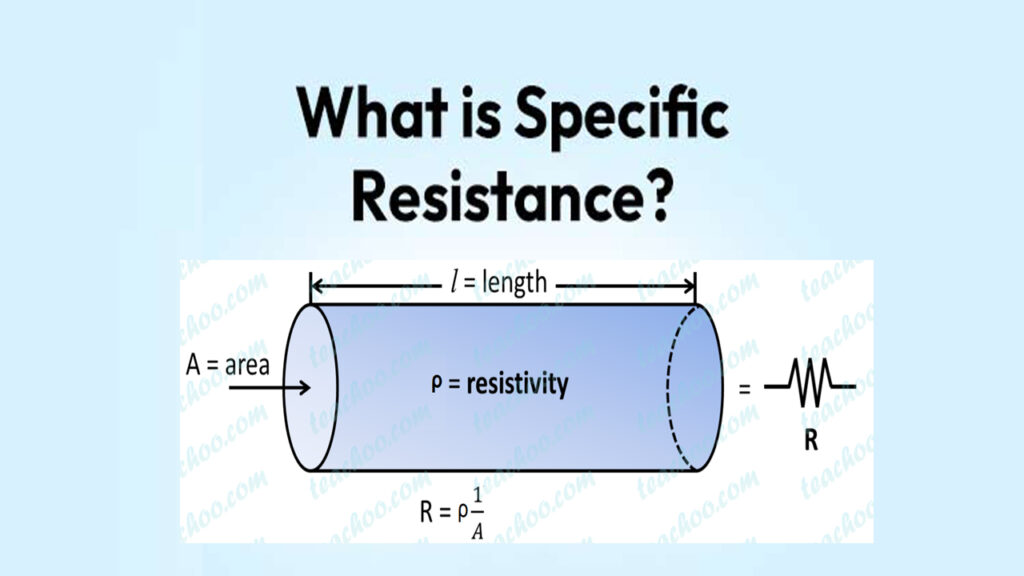Superconductors:
A superconductor is a material that, below a certain critical temperature (Tc), can conduct electric current with zero electrical resistance. This phenomenon is called superconductivity. In this state, the material exhibits perfect conductivity, meaning that electrical current can flow indefinitely without any energy loss due to resistance.

Characteristics of Superconductors:
Zero Electrical Resistance:
- When a material transitions into the superconducting state, its electrical resistance drops abruptly to zero. This means that no energy is lost when current flows through a superconducting wire or material, making superconductors highly efficient for electrical transmission.
Meissner Effect:
- Superconductors exhibit the Meissner effect, which is the expulsion of magnetic fields from the interior of the material. When a material becomes superconducting, it will push out any magnetic field within it, effectively becoming a perfect diamagnet. This causes the material to repel magnetic fields completely.
- This effect is a hallmark of superconductivity and distinguishes it from perfect conductors, which allow magnetic fields to penetrate.
Critical Temperature (Tc):
- Every superconducting material has a specific critical temperature below which it becomes superconducting. Above this temperature, the material behaves like a normal conductor. The critical temperature varies depending on the material, and typically, most known superconductors have critical temperatures that are very low (near or below liquid nitrogen temperature, around -196°C or 77 K).
- High-temperature superconductors (HTS), which have critical temperatures above the boiling point of liquid nitrogen (77 K), have gained significant interest in recent years.
Perfect Diamagnetism:
- A material in the superconducting state perfectly repels magnetic fields, creating a phenomenon known as flux exclusion. This leads to the expulsion of magnetic fields from the superconductor.
Types of Superconductors:
Type I Superconductors:
- These are the “classic” superconductors that show a complete transition from normal conductivity to superconductivity at their critical temperature.
- They exhibit a complete Meissner effect (expulsion of magnetic fields).
- Examples include lead (Pb) and mercury (Hg).
- Type I superconductors generally have low critical magnetic fields, and they can only maintain their superconducting state in relatively weak magnetic fields.
Type II Superconductors:
- These superconductors can allow magnetic fields to penetrate them in a controlled manner, forming vortices of magnetic flux inside the material. However, they still exhibit superconductivity in the regions outside these vortices.
- Type II superconductors are used in applications requiring higher magnetic fields, such as in magnetic resonance imaging (MRI) and particle accelerators.
- Examples include niobium-titanium (NbTi) and niobium-tin (Nb₃Sn).
High-Temperature Superconductors (HTS):
- High-temperature superconductors are a class of materials that exhibit superconductivity at temperatures much higher than traditional superconductors, often above the boiling point of liquid nitrogen (77 K). These materials are of great interest because they can be cooled more easily and cost-effectively.
- Examples include yttrium barium copper oxide (YBCO) and bismuth strontium calcium copper oxide (BSCCO).
- HTS materials are typically complex compounds containing copper oxide (cuprates), and they are more often Type II superconductors.
Mechanism of Superconductivity:
The phenomenon of superconductivity was initially explained by the BCS theory (Bardeen-Cooper-Schrieffer theory) in 1957. According to this theory:
Electron Pairing (Cooper Pairs):
- In a normal conductor, electrons scatter off the atoms in the material, which creates resistance. However, in a superconductor, electrons near the Fermi level pair up to form Cooper pairs. These pairs are bound together by a weak attractive interaction between the electrons mediated by lattice vibrations (phonons).
- These Cooper pairs move through the material without scattering, thus avoiding resistance. The formation of these pairs is what enables superconductivity.
Energy Gap:
- In the superconducting state, there is an energy gap between the ground state (superconducting state) and excited states. This gap prevents scattering and allows the Cooper pairs to flow without resistance.
List of Super Conductor:
| Superconductor Type | Material Examples | Critical Temperature (Tc) | Notes |
| Type I Superconductors | Lead (Pb), Mercury (Hg) | Below 10 K | Simple superconductors, exhibit perfect diamagnetism, low Tc. |
| Type II Superconductors | Niobium-Titanium (NbTi), Niobium-Sn (Nb₃Sn) | 9–18 K (NbTi), 18 K (Nb₃Sn) | High critical fields, used in magnets, more commonly used in practical applications. |
| High-Temperature Superconductors (HTS) | Yttrium Barium Copper Oxide (YBCO), Bismuth Strontium Calcium Copper Oxide (BSCCO) | 90–133 K (YBCO), 110–120 K (BSCCO) | Can superconduct at relatively high temperatures compared to traditional superconductors. |
| Iron-Based Superconductors | Iron pnictides (e.g., LaFeAsO) | 25–55 K | New class of superconductors discovered in 2008, based on iron compounds. |
| Magnesium Diboride (MgB₂) | Magnesium Diboride (MgB₂) | 39 K | A simple and cheap high-temperature superconductor. |
| Organic Superconductors | (BEDT-TTF)₂Cu(NCS)₂ | 12 K | Organic materials that exhibit superconductivity under high pressure. |
| Fullerene Superconductors | C₆₀ (Buckminsterfullerene) | 18 K | Fullerene-based superconductors under pressure. |
This table includes several notable examples, but there are many more advanced materials under development. The critical temperature (Tc) is the temperature below which the material exhibits superconductivity
Difference between Conductor and Super Conductor:
The key difference between a conductor and a superconductor lies in their electrical resistance:
Conductors:
- These materials allow electrical current to flow through them.
- They have some degree of electrical resistance, meaning that some energy is lost as heat during the flow of current.
- Common examples include copper, silver, and aluminum.
- The resistance of a conductor generally increases with temperature.
Superconductors:
- These materials exhibit zero electrical resistance below a critical temperature.
- This means that electrical current can flow through them without any energy loss.
- In addition to zero resistance they also exhibit the Meissner effect, which is the complete expulsion of magnetic field lines from the interior of the Superconductor.
- Examples include certain metal alloys and ceramic compounds.
- Superconductivity is a quantum mechanical phenomenon.
Here’s a table summarizing the key differences:
| Feature | Conductor | Superconductor |
| Electrical Resistance | Has measurable resistance | Zero resistance (below critical temperature) |
| Energy Loss | Experiences energy loss as heat | No energy loss |
| Temperature Dependence | Resistance increases with temperature | Resistance drops to zero below critical temperature |
| Magnetic Properties | Magnetic fields can penetrate | Exhibits Meissner effect (expels magnetic fields) |
Applications of Superconductors:
- Magnetic Resonance Imaging (MRI):
- Superconducting magnets are used in MRI machines because they can produce very strong and stable magnetic fields without energy loss, which is essential for high-resolution imaging.
- Maglev Trains:
- Superconductors are used in magnetic levitation (maglev) trains, where superconducting magnets create a strong repulsive force to levitate the train, reducing friction and allowing it to travel at high speeds.
- Particle Accelerators:
- Superconducting magnets are used in particle accelerators like the Large Hadron Collider (LHC) because they can generate very strong magnetic fields to guide charged particles along the accelerator’s path.
- Power Transmission:
- Superconducting materials can be used in power cables for energy transmission. These cables can transmit electricity with no energy loss due to resistance, which makes them highly efficient compared to conventional copper cables.
- Quantum Computing:
- Superconducting materials are also being explored for use in quantum computers. Superconducting qubits, which utilize the quantum properties of superconductors, are one of the promising candidates for building scalable quantum computers.
Challenges of Superconductivity:
- Cooling Requirements:
- Most superconductors require extremely low temperatures to maintain their superconducting state, which often requires expensive cooling systems (e.g., liquid helium or liquid nitrogen). This makes their use in some applications challenging and costly.
- Material Limitations:
- High-temperature superconductors are often made from complex ceramic materials that are brittle and difficult to manufacture at large scales, limiting their practical use in certain applications.
Conclusion:
Superconductors are remarkable materials that, under certain conditions, exhibit the ability to carry electrical current with no resistance. This has vast implications for various technologies, including power transmission, medical imaging, and high-speed transportation. However, the need for cooling and challenges in material synthesis remain as obstacles to widespread use. Ongoing research is focused on discovering materials that can be superconductive at higher temperatures, potentially revolutionizing many industries.

